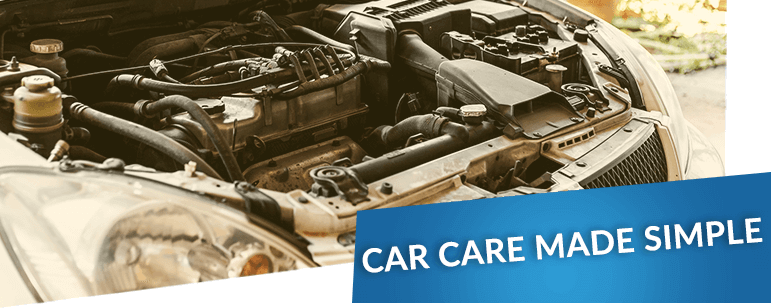Clutch problems can impact your driving experience and lead to a costly clutch replacement if you don't address the issue right away.
Read on and learn about some of the most common clutch problems and symptoms you could face as a car owner, so that you can stay safe whilst driving.
Page Contents
What Are Some of the Most Common Clutch Problems?
To get to your destination with no surprises, you must keep your clutch in good condition.
The following clutch problems can occur gradually or suddenly and with little warning.
You must have these issues fixed as soon as possible.
Slipping Clutch
Is your clutch slipping?
This can happen when the clutch fails to engage or disengage the gearbox. The car will slip out of gear or otherwise struggle to stay in gear when accelerating.
You should look out for the following warning signs if you think your car’s clutch is slipping:
- No forward movement
- Your foot is struggling to stay on the pedal
- Less effort is needed to change gears
When your clutch is working correctly, it should deliver power from the engine to your wheels, enabling the car to move forwards.
A slipping clutch will not transfer this power to the wheels, as the clutch plate has worn away and will struggle to grab the flywheel.
How to Fix a Slipping Clutch
You must book a clutch replacement if your clutch is slipping.
Choosing not to replace the faulty part could be incredibly dangerous – particularly if your clutch stops working suddenly whilst driving.
Loose Clutch Pedal
If your clutch pedal feels loose, the clutch may need to be tightened up, or there could be an issue with the master cylinder.
Your clutch may be loose if you can press your clutch pedal and it goes all the way to the floor with little resistance.
How to Fix a Loose Clutch Pedal
If your clutch pedal feels loose, it is likely that you'll need a clutch cable repair or replacement.
Sticking Clutch
If your clutch pedal doesn’t return after you push it down, then something is definitely wrong with your car’s clutch system.
You should look out for the following warning signs if you think your clutch is sticking:
- Your gear changes aren’t smooth
- Slipping gears
- Grinding gears
- Vibrations when changing gears
- Lurching when shifting gears
Your clutch may feel like it is sticking when you press it down if the clutch cable needs to be replaced, or if the oil is contaminated.
If your clutch pedal is sticking to the floor as you are driving, you should pull over when it is safe to do so and call your breakdown provider or a mobile mechanic.
You should not continue driving if your clutch pedal is sticking or behaving unusually, as you will not be in full control of the vehicle.
How to Fix a Sticking Clutch
As with a loose clutch pedal, your car most likely requires a clutch cable repair or replacement if your clutch is sticking.
Your clutch fluid – which is the same as brake fluid – could be low, or the clutch release bearings could be faulty.
Difficulty Changing Gears
Are you struggling to change gears?
Pressing on the clutch disengages the engine, allowing you to change gear.
If you are too forceful when you accelerate, this can cause your clutch to wear out.
A burning smell is a tell-tale sign that you are creating too much friction and heat around the clutch by pressing too hard.
Ease up on the clutch whilst driving to reduce wear and tear.
Accelerate just enough to avoid stalling, but not so much that you rev unnecessarily.
Consistent stalling can damage the clutch and be costly to repair, so it is certainly worth correcting this habit early on.
You should definitely have these issues checked out by a professional mechanic.
How to Fix a Changing Gear Problem
Your gears may not shift smoothly if the gearbox oil is low or contaminated or the clutch or pressure plate is worn out.
To fix this issue, you should check if the transmission or gearbox fluid is low or contaminated.
Topping up the fluid may not fix the issue entirely if you notice contamination.
A mechanic will be able to advise you further.
Noises When Pressing the Clutch
If you can hear squeaking or grumbling when you press the clutch, this can signal that the release bearing has worn out and needs to be replaced.
You may hear the gearbox squeaking or grinding when you push on the pedal or try to change gears.
How to Fix a Noisy Clutch
Your clutch may have worn out if it is making an unpleasant noise.
A growling noise could be related to the transmission fluid, whilst noises coming from the pedal are usually linked to problems within the clutch assembly.
You should have your clutch inspected by a professional mechanic soon.
Difficulty Accelerating
If you are struggling to accelerate even though you can rev the engine, then your clutch may have worn out.
A malfunctioning clutch can cause poor acceleration if it slips and can't transfer power from the engine to the drivetrain to turn the wheels.
Alternatively, the issue could be a malfunctioning mass air flow sensor, blocked fuel injector or even catalytic converter failure.
How to Fix an Acceleration Problem
Regular maintenance is essential in ensuring your car accelerates properly.
You should check and replace any worn out or corroded spark plugs and old fuel filters.
If your clutch has worn out or is malfunctioning, it will need to be inspected by a skilled mechanic.
Fluid Leak Around the Gearbox
A puddle of clutch fluid underneath your car or around the gearbox - in a vehicle with a hydraulic clutch system - can indicate there's a leak in the system.
When your clutch fluid levels drop, the clutch won't work properly.
How to Fix a Clutch Fluid Leak
Your car may have a clutch fluid leak if you hear grinding noises when shifting or find this more difficult to do.
Dirty or low clutch fluid can also indicate a leak, as can a clutch pedal that stays on the floor.
If fluid gets onto the clutch plate, this can cause slipping and further damage.
You could even lose your clutch.
For this reason, you should have the issue fixed by a mechanic as soon as possible.
Spongy Clutch
If your clutch feels spongy, then this can signal that something isn’t working as it should be.
A spongy or soft clutch pedal is a common clutch problem that can signal that your brake fluid may be low and causing the clutch slave cylinder to struggle.
Alternatively, air could be making its way into the clutch line, which is part of your gearbox system.
How to Fix a Spongy Clutch
If your clutch is soft or spongy, then it may need bleeding.
You should refill the brake fluid after bleeding the clutch – a process in which you remove pockets of air from the hydraulic system.
After bleeding the clutch, you can replace the brake fluid by removing the cap on the brake fluid reservoir and replacing the contents with fresh brake fluid.
You can do this yourself, or you can book a professional brake fluid replacement for added peace of mind.
How Can I Take Care of My Clutch?
To take care of your clutch and make it last longer, you should do the following:
- Don’t ride the clutch
- Go into neutral when stopping
- Use your handbrake when parking
- Make swift gear changes
- Don’t change gear too often
How Do You Know If Your Clutch Is Going?
Your clutch may be going if you notice any of the following warning signs:
- A slipping clutch
- A loose, sticky or spongy clutch pedal
- A clutch fluid leak
- A grumbling or squeaky clutch pedal
- Difficulty accelerating
- Difficulty changing gears
Other common car clutch problems include the clutch being misaligned and the pressure plate being faulty.
These issues can result in the clutch not engaging properly or slipping.
If you notice any of these clutch problems, you should book a clutch replacement as soon as possible, as your clutch may have gone.
We hope that this blog has inspired you to take good care of your car’s clutch.
FAQs
Can You Drive with a Failing Clutch?
Are Clutches Covered Under Warranty?






